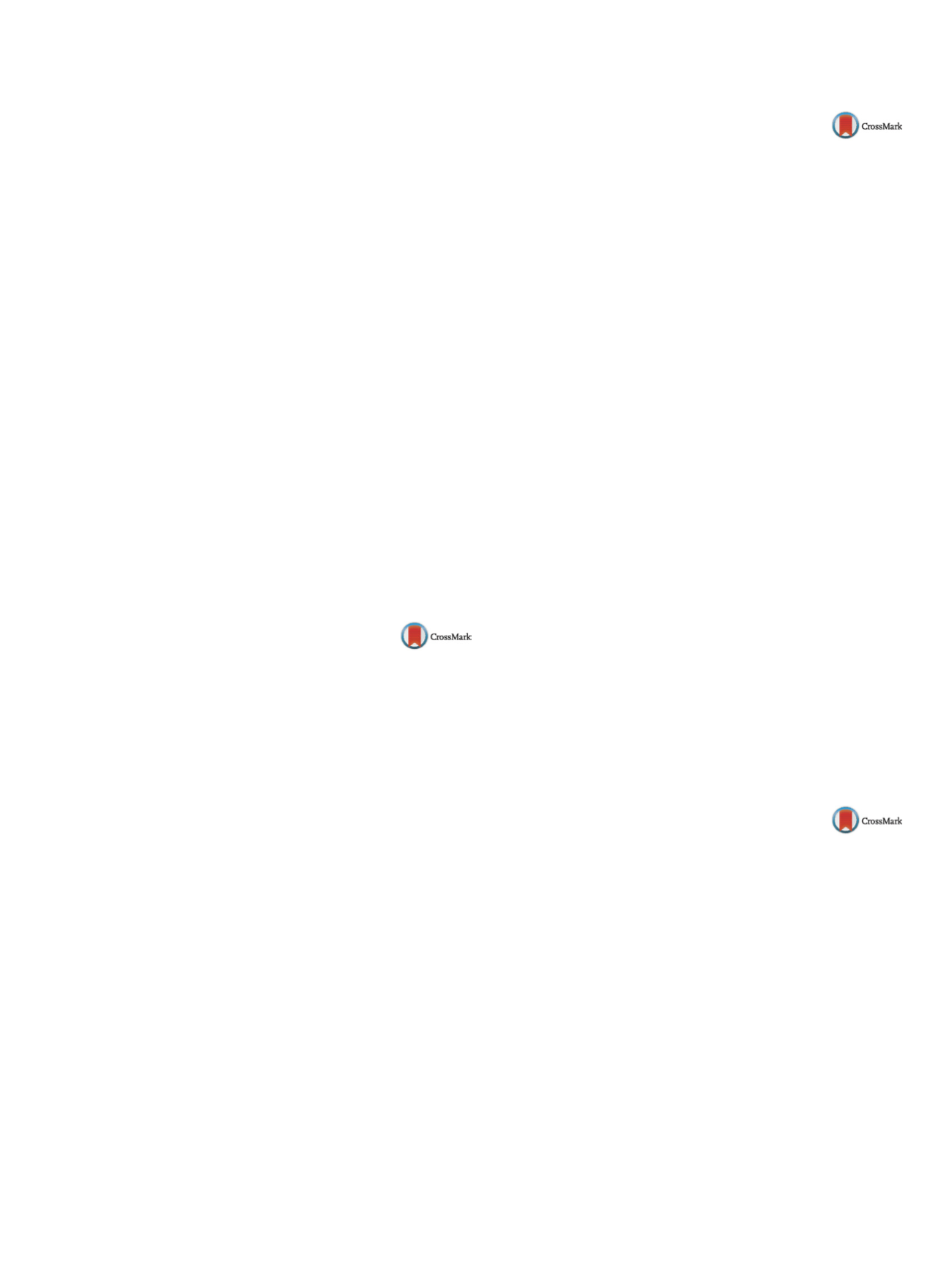

25th European Congress of Psychiatry / European Psychiatry 41S (2017) S772–S846
S829
3
Hospital Universitario Marqués de Valdecilla, General Medicine,
Santander, Spain
∗
Corresponding author.
Introduction
More than 60% of patients receiving intensive treat-
ment with first generation antipsychotic manifest some type of
clinically significant extrapyramidal side effects. Parkinsonian syn-
drome is the most common and is characterized by rigidity,
tremors, akinesia and bradykinesia and usually improves with dis-
continuation of antipsychotic drug or anticholinergic association.
Methods
It is a 60-year-old man, married with two children.
Initiates contact with mental health in 2013 with a diagnosis
of adjustment disorder. In February 2014 he requires hospi-
talisation, establishing the diagnosis of delusional disorder and
starting treatment with long-acting injectable paliperidone palmi-
tate (100mg/month) with remission of psychotic symptoms
in a few days. When we receive the patient in our clinic,
he presents parkinsonian extrapyramidal symptoms (UKU sub-
scale: 18), with significant functional limitation. We decrease the
dose to 75mg/month and an anticholinergic was added with-
out improvement of Parkinsonian clinic, so we decided to switch
to long-acting injectable aripiprazole 400mg/month, objectifying
complete remission of extrapyramidal syndrome (UKU subscale:
0).
Conclusions
The mechanism of action of aripiprazole m LAI (par-
tial agonist of D2 receptors in the brain) without decreases in
the nigrostriatal dopamine pathway, of improving extrapyramidal
effects associated one other antipsychotics.
Disclosure of interest
The authors have not supplied their decla-
ration of competing interest.
http://dx.doi.org/10.1016/j.eurpsy.2017.01.1623EV1294
Ekbom syndrome in a visually
impaired patient with alcohol abuse
and OCD: A case report
A. Portilla Fernandez
1 ,∗
, L. Montes Reula
2, H. Saiz García
3,
R. Ortigosa Aguilar
4, A.S. Rosero Enriquez
5,
A. Ballesteros Prados
61
Buztintxuri Outpatient Clinic, Psychiatry, Pamplona, Spain
2
Ermitaga˜na Outpatient Clinic, Psychiatry, Pamplona, Spain
3
Navarra Hospital, Psychiatry Department, Pamplona, Spain
4
Clínica Universidad de Navarra, Psychiatry, Pamplona, Spain
5
Navarra Hospital, Psychiatry, Pamplona, Spain
6
Estella Outpatient Clinic, Psychiatry, Estella, Spain
∗
Corresponding author.
This is a case report of a 63-year-old patient with no previous atten-
tions in mental health. He is referred by his general practitioner
because he presents wounds all over his body. He reports that there
is a plague of bugs at his place that bite him everywhere. There-
fore, he scratches continuously, trying to remove the stingers, and
injuring himself all over. The family ensures there are no bugs at
all, but the patient threatens to set fire to the house in order to
extinguish the plague or even kill himself. An OCD with cleaning
compulsive behavior was also present since many years, as well
as an alcohol abuse. The patient required hospitalization in the
psychiatry service. Organic cause for the disorder was discarded.
Long-acting injectable aripiprazol was introduced and the patient
stopped drinking. Progressively, the delusional symptoms began to
subside. Now he maintains no awareness of illness but he says the
bugs are disappearing and, at least, they do not bite him anymore.
Disclosure of interest
The authors have not supplied their decla-
ration of competing interest.
http://dx.doi.org/10.1016/j.eurpsy.2017.01.1624EV1295
Dopamine, glutamate and biotypes in
the future of schizophrenia
H. Prata-Ribeiro
1 ,∗
, A. Ponte
2, G. Luísa
21
Centro Hospitalar Psiquiátrico de Lisboa, Servic¸ o de Psiquiatria
Geral e Transcultural, Coimbra, Portugal
2
Centro Hospitalar Psiquiátrico de Lisboa, Servic¸ o de Esquizofrenia,
Lisboa, Portugal
∗
Corresponding author.
Introduction
Approximately a third of patients with schizophre-
nia show limited response to antipsychotic medication. As several
studies have been suggesting new classifications to schizophrenia,
our aim is to review different hypothesis and seek a new way of
approaching patient’s treatment in day-to-day practice.
Methods
The methods we used consisted on reviewing several
papers that have recently been published on the area of classifica-
tion and treatment of schizophrenia, considering an approach to
the findings that enables a practical and clinical advantage in the
area.
Discussion
New studies suggest that neuroimaging measures
of dopamine and glutamate function might provide a means of
stratifying patients with psychosis according to their response to
treatment. Some of those studies associate treatment responsewith
the anterior cingulate level of glutamate and striatal dopamine syn-
thesis capacity. Other study identified three biotypes with different
outcomes to psychosis, reaching a stronger association between
biotypes as predictors of illness severity than the DSM-V classifica-
tion. If a correlation between these studies was found, we would be
able, in theory, to predict the response to treatment using simple
and affordable neurobiological measures.
Conclusion
Associating the anterior cingulate glutamate levels,
the striatal dopamine synthesis capacity and biotypes hypothe-
sis in schizophrenia, one can expect to be possible to predict the
degree of response to treatment, based on more affordable meth-
ods to day-to-day clinicians than the measure of neurotransmitter
levels, enabling the regular clinicians to narrow their pharmacolog-
ical options for patients, achieving better results in the approach to
schizophrenia.
Disclosure of interest
The authors have not supplied their decla-
ration of competing interest.
http://dx.doi.org/10.1016/j.eurpsy.2017.01.1625EV1296
Hyperthermia and neuroleptic
malignant syndrome-Case report
K. Pulji´c
1 ,∗
, M. Herceg
1, V. Juki´c
21
University Psychiatric Hospital Vrapce, Department of Biological
Psychiatry, Zagreb, Croatia
2
University Psychiatric Hospital Vrapce, Department of Forensic
Psychiatry, Zagreb, Croatia
∗
Corresponding author.
Neuroleptic malignant syndrome (NMS) is a rare, but life-
threatening, idiosyncratic reaction to neuroleptic medications that
is characterized by fever, muscular rigidity, altered mental sta-
tus, and autonomic dysfunction. NMS often occurs shortly after
the initiation of neuroleptic treatment, or after dose increases.
Malignant hyperthermia (MH) or malignant hyperpyrexia is a rare
life-threatening condition that is usually triggered by exposure
to certain drugs. The 46-years-old female patient was diagnosed
schizophrenia at the age of 22. Currently, she is hospitalized due to
psychotic decompensation. The patient was admitted with follow-
ing daily dose therapy of: haloperidol 15mg, biperiden 4mg and
diazepam 15mg. During this hospitalization she developes mus-
cle rigidity, tremor, hyperthermia, and laboratory results showed
increase of enzimes CPK and LDH, so we started treatment of sus-
pected malignant neuroleptic syndrome. After a treatment and


















